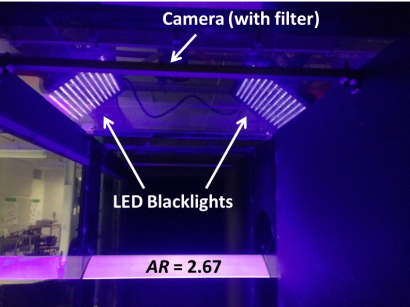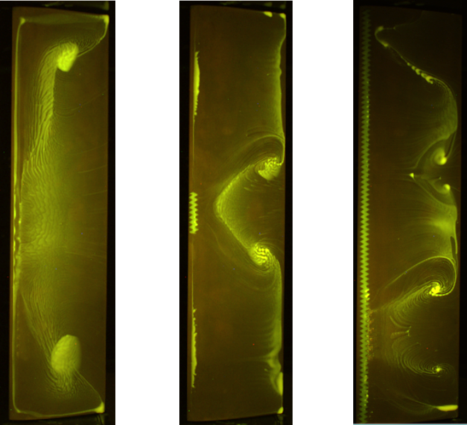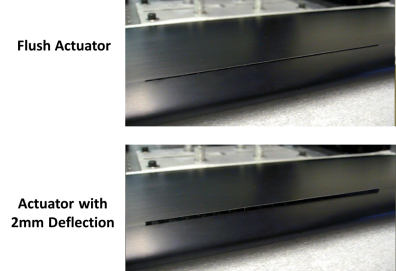Drones and High Altitude Long Endurance vehicles typically operate at moderate to high Reynolds numbers based on airfoil chord length, i.e., Rec ≈ 105 to 106. These vehicles are becoming increasingly important to applications like national security-related surveillance, search and rescue in dangerous terrain, scientific research, and animal conservation, among others. As such, the understanding flow conditions in such a way to ensure the safety of these aircraft is of paramount importance. However, under certain conditions and during gusty weather, stall cells can appear suddenly and have a major detrimental impact on performance, maneuverability, and safety. Unfortunately, stall cells are an inherently 3-D phenomenon and a sophisticated understanding of their formation and behavior is not yet present within the scientific community.
To address this, the present work uses Stereoscopic Particle Image Velocimetry (SPIV), Oil Flow Visualization (OFV), and surface pressure measurements to investigate flow field behavior over thin and thick airfoils (NACA0015 and NACA0009) and at angles of attack close to stall. The experimental set-up for OFV over a NACA0015 airfoil with aspect ratio AR = 2.67 is shown in Figure 1.
Static zig-zag tape and balsa wood trips can be used to induce stall cells at lower Reynolds numbers than they would be otherwise present, and to characterize stall cell formation. Depending on the trip used (i.e., full span versus partial span) the nature of the induced flow field will be changed. A sample result is shown in Figure 2.
A dynamic actuator was developed to dynamically induce stall cells; it is shown before and after actuation in Figure 3. When a stall cell is triggered on-demand, the evolution of the flow field can be observed as stall cells form and dissipate, provided insight into the physics behind their formation. Once the physics behind this phenomenon are better understood, this project will leverage the information to demonstrate the feasibility of mitigating them.




